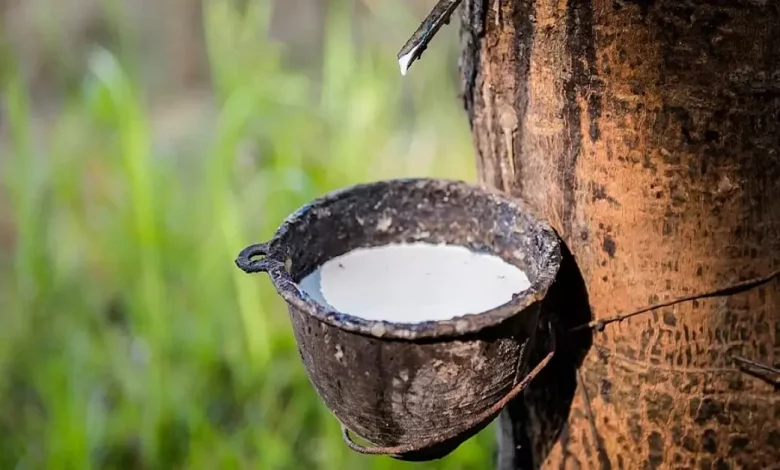Financial support increase for the rubber sector
Syllabus: Economy[GS Paper-3]

Context: The financial support for the Rubber sector has been raised by 23% to Rs 708.69 crore for the next two fiscal years, as part of the ‘Sustainable & Inclusive Development of Natural Rubber Sector’ initiative.
Key Points:
- To support the rubber industry, the government plans to plant 12,000 hectares of rubber in traditional areas over the next two years.
- This will be funded with Rs 43.50 crore and the rate of assistance for growers has been increased to Rs. 40,000 per hectare.
- Additionally, 3,752 hectares will be used for rubber cultivation in non-traditional regions with an outlay of Rs 18.76 crore.
- The Ministry of Commerce & Industry will supply planting materials worth Rs 50,000 per hectare.
- This is in addition to the plantation efforts in the North East under the INROAD project. SC growers in non-traditional regions will receive planting assistance of Rs 2,00,000 per hectare.
Current condition of the rubber industry in India:
- India is an important player in the world rubber industry being both the largest producer and consumer of rubber.
- Though the state of Kerala constitutes a really big share of India’s rubber production, it produces more than 70% of the natural rubber of the entire country.
- The Indian rubber industry is a large producer of an equally diverse range of products comprising heavy duty earth mover tires.
- In this industry, there are only two sectors – the tire sector and the non-tire sector.
- The tire sector exports auto tires to advanced countries such as the USA, while the non Tire sector produces industrial products and the rubber goods production in the non-tire category is over 50%.
- Rubber which is the largest. It is the largest consumer by the automobile tire sector which is followed by bicycle tires and tubes, shoes, belts and hoses, and the next stage is camelback and latex products.
- Other rubber products are the last consumption market coverage.
Difficulties faced by the rubber industry:
- The rubber industry has been struggling with the impact of low rubber prices, which has affected the economic sustainability of rubber cultivation.
- Additionally, the industry is facing challenges due to rising labour costs and a shortage of labour.
- Climate change and environmental issues, such as changing weather patterns influenced by climate change, further pose difficulties for rubber farming, especially in traditional cultivation areas like Kerala.
- Moreover, India heavily relies on imports from Vietnam, Malaysia, Indonesia, and other Southeast Asian nations, as well as large quantities of natural rubber from Ivory Coast.
- This import dependence not only puts pressure on domestic prices but also discourages domestic production.
- Furthermore, the industry’s limited adoption of technological advancements is hindering productivity and competitiveness.
Efforts made to support and enhance the rubber industry:
- The Rubber Board, established by the Government of India, aims to develop the rubber industry in the country.
- The board is promoting the formation of Rubber Producers Societies (RPS) to empower rubber growers.
- Over the next two years, assistance will be provided for the creation of about 250 new RPSs.
- Additionally, plans are in place to establish three nodal centres of the National Institute of Rubber Training (NIRT) in the Northeast region of Agartala, Guwahati, and Nagaland.
- This initiative, with a budget of Rs 5.25 crore over the next two years, aims to support micro, small, and medium enterprises (MSMEs) in the region by providing training in product manufacturing and quality control.
Conclusion:
Despite facing challenges, the industry is on a resilient path towards growth with increased financial aid, strategic plantation initiatives, and measures to empower growers. Through technological advancements and training programs, the industry is set for sustainable growth and improved global competitiveness.
Source: DD News, The Indian Express
UPSC Prelims Practice Question:
Q.Which one of the following groups of plants was domesticated in the ‘New World’ and introduced into the ‘Old World’? (2019)
a. Tobacco, cocoa and rubber
b. Tobacco, cotton and rubber
c. Cotton, coffee and sugarcane
d. Rubber, coffee and wheat
Ans : “a”





.png)



